Sega had set the standard for arcade racers and Namco could never quite topple their legacy. When it came to track design Sega was unparalleled. They had demonstrated that a great track could and should tell a story. The developers at Namco on the other hand wanted to create a city that was perfect for street racing. It had to be somewhat believable but have elements that made it a drivers paradise. The story that Namco would create would be based on a town that celebrated racing in every format. The studio invented Ridge City. It was an interesting location but the story took a while to develop.
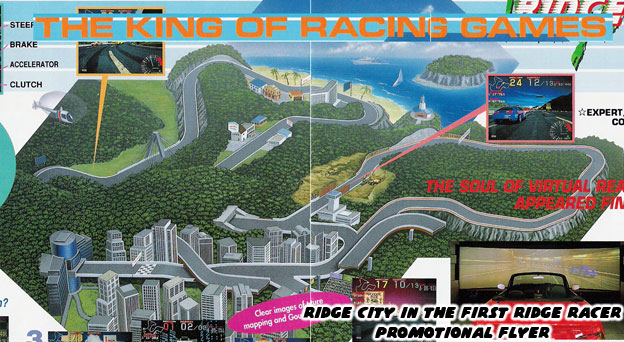
The town had influences from Japanese cities, European countrysides and USA bay area scenery. Courses were designed based on the layout of the city, its roads, highways and residential neighborhoods, coast and mountain range. Multiple circuits would evolve over the years based on portions of these tracks. One might cut through the cities and the mountains, one might cut through the beach and the city as well. Players could get used to familiar portions of the track and become very adept at racing through them at very high speed.
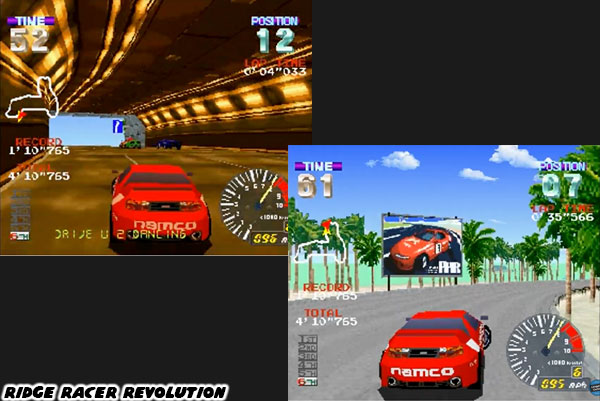
Expressways would be connected by massive, colorfully lit tunnels. Bridges of different types would connect valleys and islands on the absolute outskirt of town. Circuits were not limited to the freeway system either. They could go through an industrial strip, suburban paradise or an airport runway as well. The exact layout of Ridge City would become standardized through the life of the franchise. In Sega racing games the tracks in one title had nothing in common with those in a sequel. They all looked fantastic however and all told an amazing story. As Ridge City grew it told a story that was more grounded in reality. The courses felt familiar to players through every sequel, it was like revisiting a friend each and every time they started a new race.
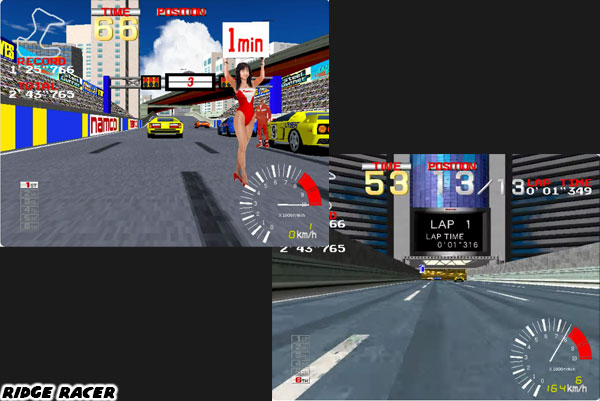
The studio was eager to expand on the locations featured in the game as well as the themes that each track explored. They wanted to create a narrative on the city, or cities based on landmarks, architecture and road layouts. In short they wanted to introduce the art of storytelling to the circuits. They did this in the third game of the series, Rave Racer from 1995. The track layouts were much more dynamic in the game, with roads rising and falling very sharply in elevation. When that was combined with the see-saw action of the screen it was easy for players to get disoriented. The designers were trying to give audiences a sense of speed with the graphic tricks.
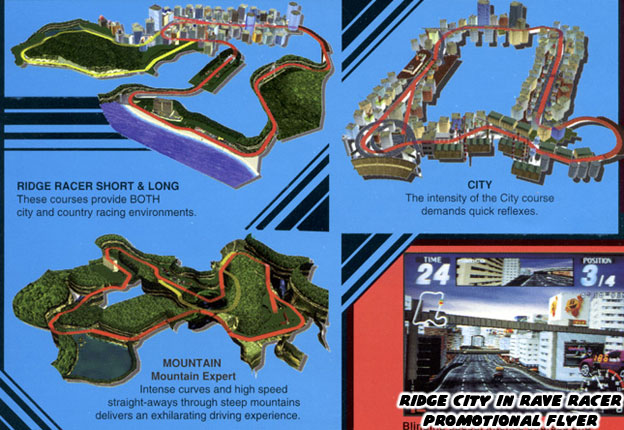
Rave Racer expanded greatly on the types of winding courses that the series would become synonymous with. Mediterranean architecture and European rally influences had begun to creep into the layout as well. Within three games the courses had grown large enough to outgrow the city backdrop and include the entirety of Ridge County. Sega may have created the most exotic of locations but there was something to be said of all the how diverse one location had become.
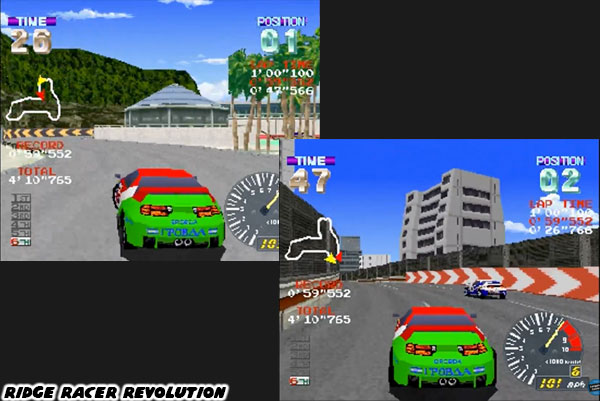
As the series went on the development teams would literally pick up where they had left off. Not all audience members had realized it but Ridge City was in a perpetual state of construction and refinement. Each time drivers visited the game they were supposed to feel as if nothing had changed. The cars were all still very sporty and the drifting mechanic was still a major selling point however audiences were encouraged to look beyond the retaining wall. Ridge City itself was growing in between the games. Buildings that were being erected in one title had been completed a few years down the road. Warehouses, and docks that once stood empty were now bustling with ships and traffic.
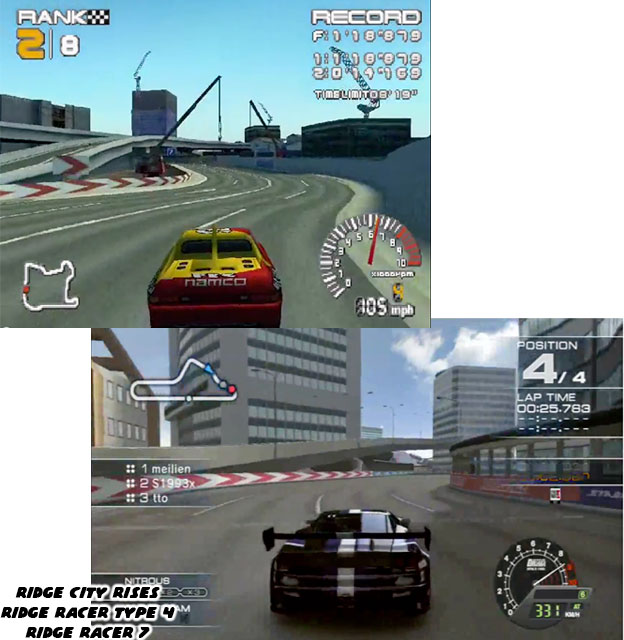
The skyline of the virtual city was in a constant state of flux just like the real world cities. In terms of graphics the game was only going to look better over the next 20 years but the heart of Ridge City would remain. The Sega race tracks would always be memorable to arcade visitors but the courses from Ridge Racer would also retain a sense of timelessness for console owners. It was the shift to the Playstation that had the biggest impact on the evolution of Ridge Racer. The console could never match the visual quality of newer arcade racers but it did offer satisfying ways to experience the racing genre. Some of the biggest and best moments in the franchise were owed to the games that followed Ridge Racer Revolution. The next blog will look at one of these titles.
As always if you would like to sponsor me
please visit my Patreon page and consider donating each month, even as little as $1 would help make better blogs and even podcasts!












I guess you can also say the same things about San Francisco Rush. Continuity in the tracks, grounded in reality. Rush 2049 takes some liberties with reality, but the continuity is the same.
ReplyDeleteI can imagine someone saying, "whoa that's different" about a section of changed track for Ridge City.
ReplyDelete